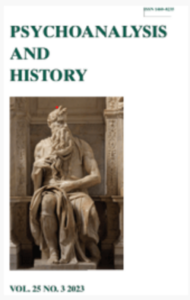
The Ambivalent Translator: Towards a History of Psychoanalytic Translations
Edition: Edinburgh University Press
Collectiion: Psychoanalysis and History
ISBN: Print ISSN: 1460-8235 / Online ISSN: 1755-201x
Veröffentlicht am: 03.12.2023
Weiteres:
in Psychoanalysis and History Volume 24, Issue 3, pp. 271-296
An influential strand within modern translation studies has drawn a portrait of the translator as a deeply ambivalent figure, charged with the challenging task of preserving the foreign of the original work within the new version, and thus as inevitably torn between two languages and cultures. The case of the first English translations of Freud’s work, undertaken by Abraham Arden Brill, is used here to demonstrate that a detailed historical and philological analysis of textual practices can help us situate the figure of the ambivalent translator in its proper context, namely within a historical model of translation. Retracing this model and its ramifications also has larger implications for an approach that should allow us to understand the relational, affective and institutional bonds connecting authors, translators and readers in global processes of cultural transmission of the human sciences.

